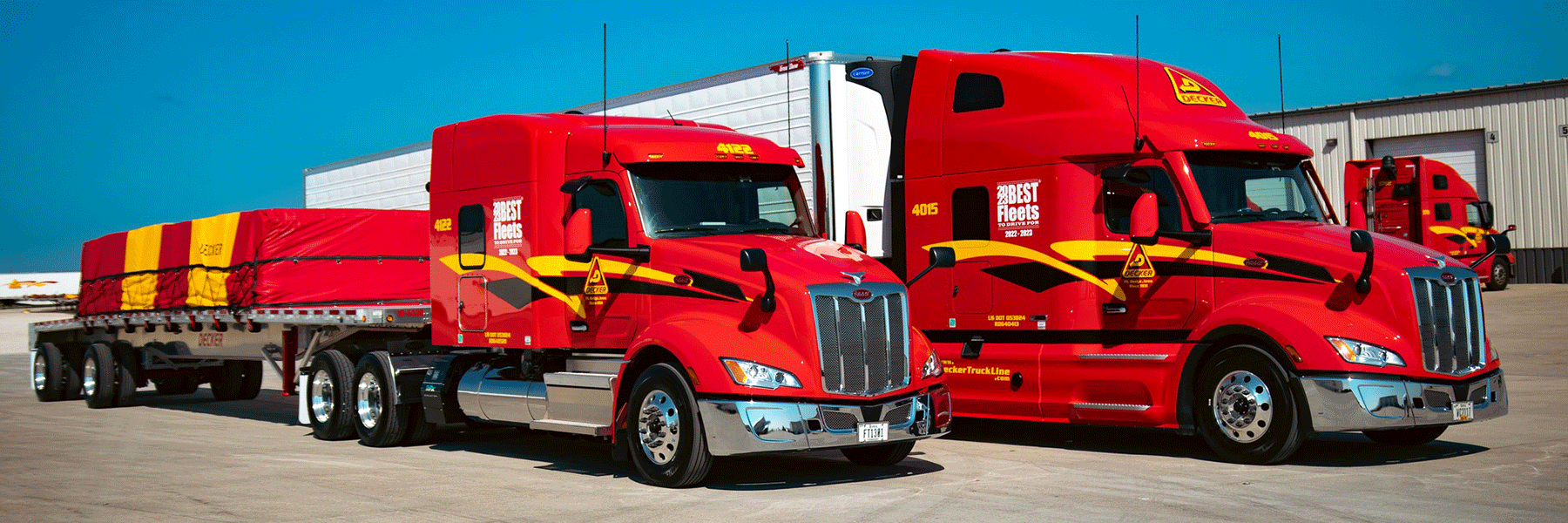— James Menzies
TORONTO, Ont. — Being recognized as one of the Top 20 Best Fleets to Drive For in North America doesn’t mean a carrier is completely insulated from the driver shortage.
Only 38% of the Top 20 fleets indicated to the program’s administrators that the driver shortage had a “minimal impact” on their operations. That means 62% are affected: 31% say it is limiting their ability to grow; 19% say the driver shortage has a “moderate impact” on their operations; and 13% say it has had a “strong impact.”
So what are the best fleets doing to address the issue? Mark Murrell and Jane Jazrawy of CarriersEdge surveyed more than 80 carriers in the US and Canada that were nominated by their drivers as being among the best for whom to drive. Some of the trends that emerged through this process were shared yesterday during the first in a series of seminars and Webinars on the program.
Here are a few examples:
Reaching out to women
Only 5% of professional drivers in the US are women and the figure is an even more woeful 3% in Canada. This represents a “huge untapped resource,” Jazrawy noted.
For the first time this year, she said she’s noticed carriers making a more concerted effort to attract and retain female drivers. Fleets that offer team runs, such as Boyle Transportation, have been the most successful.
“When there’s a high percentage of women (drivers within a fleet), they’re almost always teams,” she said, adding 32% of Boyle’s driving force is made up of women.
In five of the Top 20 Best Fleets, female drivers account for at least 10% of the driving force. One that stands out is Interstate Distributor, whose driving force is 13% women. Jazrawy said the carrier’s parent company is owned by three sisters who place a strong emphasis on ethics and have made it a point to make women welcome at the company.
“They have a code of ethics and it’s important to them in running their business to encourage more women to join the company,” Jazrawy explained. There’s also a women’s group within the company, headed by one of the female owners.
Another company that wasn’t among the Top 20, but has had some success attracting women is Con-Way. Jazrawy said it’s the only one she’s seen that has a Web site dedicated specifically to its female drivers. Some carriers, Jazrawy said, target women from the military, as they are accustomed to working in a male-dominated profession and transition well to a career in trucking.
Offering continuous learning
Half of the Top 20 Best Fleets now offer some form of tuition reimbursement for drivers who would like to pursue an education.
“It spiked this year,” said Murrell. “A full 50% of our Best Fleets have formalized programs. We’ve never seen that before. In addition, another 25% have informal programs. They’re not doing full tuition reimbursements but they’re taking advantage of the programs associations offer that allow people to continue their learning, learn new skills and expand their knowledge in different areas. This was a big shift.”
One carrier offers $500 tuition reimbursements on approved courses, for example.
“This is very attractive to millenials,” Murrell noted.
Boyle Transportation offers a scholarship program that Murrell said is “unlike any other we’ve ever seen.” It pays a $2,000 grant to every driver’s child who’s pursuing a post-secondary education.
“There’s no limit on the number of people,” Murrell explained. “Every person who qualifies gets it. If you’re a driver at Boyle and you have two kids going to university, you’re getting $4,000 per year to cover that.”
Equipping drivers with technology
Some carriers are also using technology to lure drivers and to keep them satisfied. Boyle Transportation gives new hires an iPhone with a company e-mail address. Others give drivers a tablet, pre-loaded with useful apps and programs.
“It’s kind of like an electronic flight bag,” Murrell said. “It’s a very interesting idea and I expect to see more of that in the next couple years.”
A new trend that emerged this year is the use of EpicVue to attract and retain drivers. It’s a new service – not yet available in Canada – that provides satellite TV inside the truck. Murrell said four of the Best Fleets are offering this to drivers.
More of the Best Fleets are also designing custom apps to keep drivers connected while on the road. Last year, only two of the Best Fleets had their own app; that number has climbed to nine this year.
Driver surveys collected through the evaluation process show drivers want to stay connected and like to have WiFi available in their trucks.
Check back at Trucknews.com soon for more highlights from the Best Fleets to Drive For Webinar. Or, you can register for free to call in to one of the upcoming Webinars or in-person seminars. Here are the dates:
- May 28 – Webinar
- June 2 – Toronto, Ont.
- June 4 – Moncton, N.B.
- June 10 – Webinar
The live seminars will run from 9 a.m. till noon and will include refreshments. The Webinars will go from 1 p.m. till 3:30 p.m. Admission is free but advance registration is required. You can call Thomas at 905-530-2430 or e-mail info@carriersedge.com to register.
Original source: http://www.trucknews.com/business-management/three-ways-the-best-fleets-to-drive-for-are-dealing-with-the-driver-shortage/




